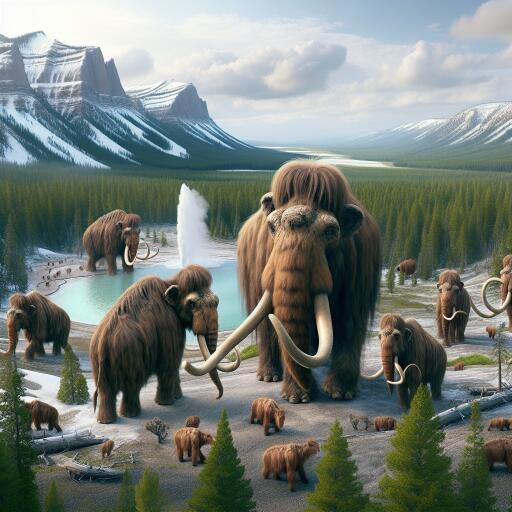
Woolly Mammoths In Yellowstone? Biotech Company Says It Has The Technology
In an era where the once-impossible becomes reality, the concept of bringing extinct species back from the dead has transitioned from science fiction to a tangible future. Colossal Biosciences, a pioneering biotech firm, has boldly announced its intention to resurrect the woolly mammoth, with an eye on the ancient creatures roaming the expanses of Yellowstone National Park by 2028.
Picture this: the iconic landscapes of America’s first national park, already home to grizzly bears, wolves, and bison, enriched with the addition of woolly mammoths reintegrated into their ancient habitat. This ambitious dream of genetic scientists seeks to add mammoth traffic jams to Yellowstone’s list of natural spectacles.
But the journey to reintroduce these prehistoric giants is fraught with ethical, ecological, and logistical challenges. Colossal Biosciences unveiled its plan after achieving groundbreaking progress in genetic science, fueling their confidence in making this audacious goal a reality.
The Science Behind The Dream
Driven by extensive research and state-of-the-art technology, Colossal aims to craft a hybrid between the woolly mammoth and its closest living relative, the Asian elephant. This endeavor involves intricate genetic editing, with a goal to recreate the mammoth’s distinct characteristics within a hybrid species. The project has already reached significant milestones, including the creation of elephant iPSCs (induced pluripotent stem cells) and the assembly of complete genomes.
The initial phase of reintroduction plans to keep the mammoth hybrids in controlled, secure environments. These settings will serve as a transition space where the animals can be monitored and cared for by specialists. Success in this phase will pave the way for the grand vision of “rewilding,” introducing these mammoth-elephant hybrids into expansive natural habitats where they could roam freely, much like their ancestors did thousands of years ago.
Potential Habitats and Ecological Impacts
The vast and wild terrains of Wyoming, encompassing Yellowstone National Park, emerge as a prime candidate for the mammoth’s new home. This region, part of the mammoths’ historic range, offers a landscape that could support their reintroduction. However, the changed climate and modern ecological dynamics present a puzzle for scientists. The mammoth steppe, a biome that once spanned the Northern Hemisphere, provided an ideal habitat for mammoths, with cold, dry climates and extensive grasslands.
Despite the evident differences between prehistoric times and the modern era, some researchers believe Yellowstone’s ecosystem could potentially support these giants. Nonetheless, the absence of the mammoth steppe’s specific conditions in today’s climate raises questions about the feasibility and ethicality of such an introduction.
The Road Ahead
Colossal’s vision extends beyond the novelty of resurrecting a species; it aims to address ecological and climate challenges. Mammoths played a crucial role in their ecosystems, and their reintroduction could aid in restoring ecological balance and combating climate change. However, the project remains in its infancy, with many hurdles to overcome, from creating a viable population to ensuring these ancient giants can thrive in a modern ecosystem.
The prospect of mammoths in Yellowstone captivates the imagination and inspires debate among scientists, conservationists, and the public alike. While the technical capabilities for such a profound endeavor inch ever closer to reality, the broader implications of de-extinction continue to provoke thoughtful consideration of humanity’s role in nature’s intricate tapestry.
As Colossal Biosciences charts the course toward bringing back the majestic woolly mammoth, we stand on the brink of a new frontier in science and conservation. The possibility of witnessing these prehistoric creatures walk the earth again highlights the extraordinary potential of genetic technology while reminding us of the profound responsibilities that come with wielding such power.





Leave a Reply